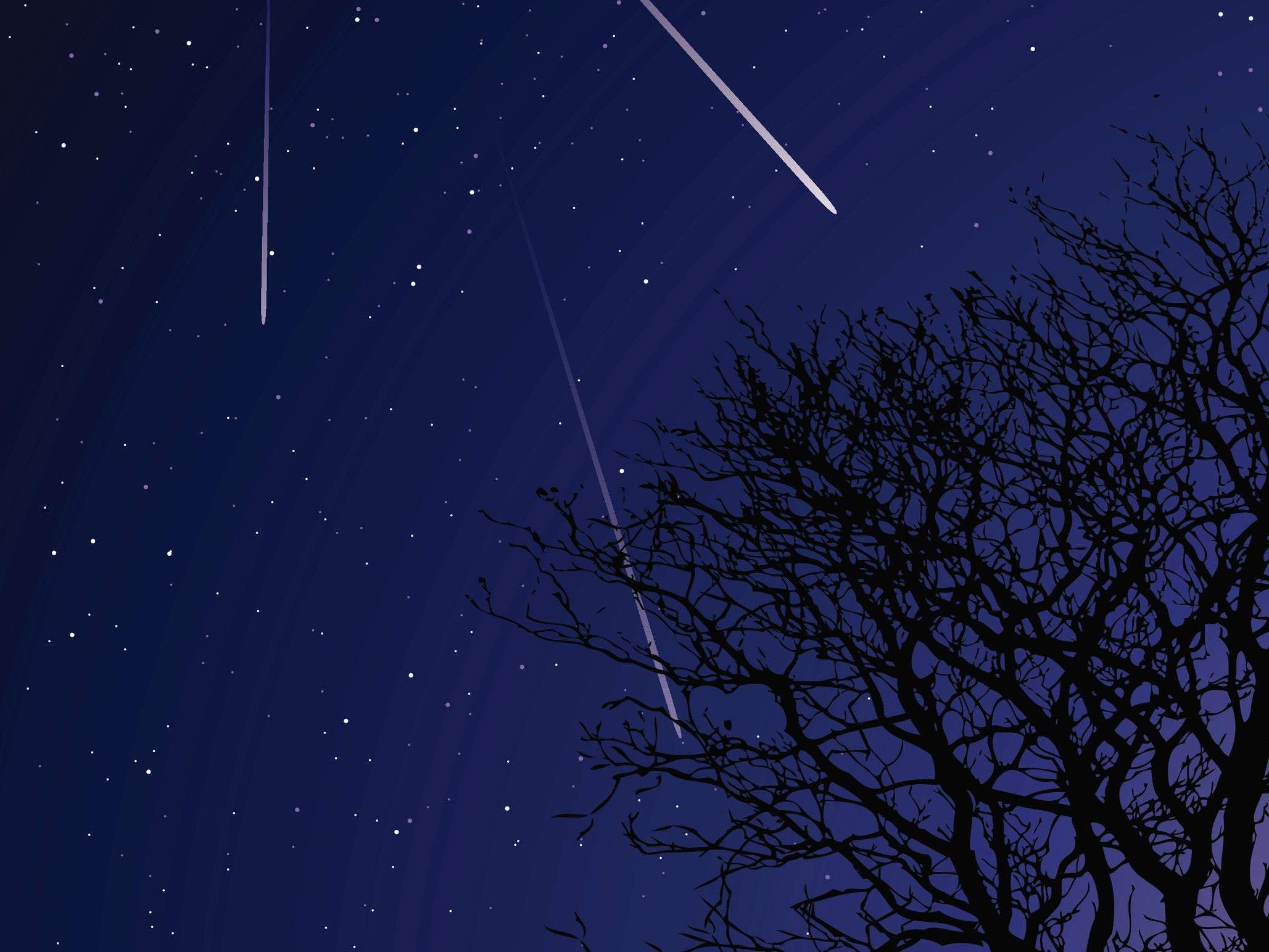Everything to know about Draconid meteor shower
Two meteor showers will grace October’s skies, beginning with the Draconid meteors peaking on Sunday and Monday

Your support helps us to tell the story
From reproductive rights to climate change to Big Tech, The Independent is on the ground when the story is developing. Whether it's investigating the financials of Elon Musk's pro-Trump PAC or producing our latest documentary, 'The A Word', which shines a light on the American women fighting for reproductive rights, we know how important it is to parse out the facts from the messaging.
At such a critical moment in US history, we need reporters on the ground. Your donation allows us to keep sending journalists to speak to both sides of the story.
The Independent is trusted by Americans across the entire political spectrum. And unlike many other quality news outlets, we choose not to lock Americans out of our reporting and analysis with paywalls. We believe quality journalism should be available to everyone, paid for by those who can afford it.
Your support makes all the difference.The Draconid meteor shower will be the first meteor shower of autumn and October specifically, with a peak expected on 9 to 10 October.
The Draconids are considered hit or miss meteor shower that can provide a spectacular show, such as the 660 meteors per hour seen in 2011, fewer than 10 meteors per hour, as was Nasa’s prediction for the 2015 Draconids. These meteors can appear to radiate from constellation Draco in the northern sky, from which they get their name, but you may see Darconid meteors shoot across any part of the sky.
The Draconids result from Earth passing through the trail of dust and debris left by the comet 21P/Giacobini-Zinner, which orbits the Sun every 6.6 years.
The Draconids are generally rather faint owing to their moving relatively slowly for meteors, according to Nasa, entering the Earth’s atmosphere at just 40,000 miles per hour. This faintness may be compounded by a full Moon rising around 4.55pm EDT on 9 October — the already faint and infrequent Draconid meteors may be lost in the moonlight.
The second meteor shower expected in October, however, may provide a better show. The Orionid meteor shower will peak between 21 and 22 October this year, and could yield up to 20 quickly streaking meteors per hour. They are best viewed in the night sky after midnight, and can appear to originate from their radiant, the constellation Orion.
But as with the Draconids, Orionid meteors can be seen anywhere in the sky, and Nasa recommends looking for Orionid meteors at 45 to 90 degrees from the Constellation Orion.
“They will appear longer and more spectacular from this perspective,” a Nasa blog reads. “If you do look directly at the radiant, you will find that the meteors will be short. This is an effect of perspective called foreshortening.”
The fast moving Orionids are typically brighter than the Draconids, according to Nasa, often leaving long, persistent trails in the sky as they enter the atmosphere at a searing 148,000 miles per hour.
The Orionid meteors are debris from the trail of Halley’s Comet, and they are not the only ones — the Eta Aquarid meteor shower each May results from Earth passing through another portion of comet Halley’s trail. Traveling a much longer orbit than 21P/Giacobini-Zinner, Halley will not pass near Earth again until 2061.
Join our commenting forum
Join thought-provoking conversations, follow other Independent readers and see their replies
Comments